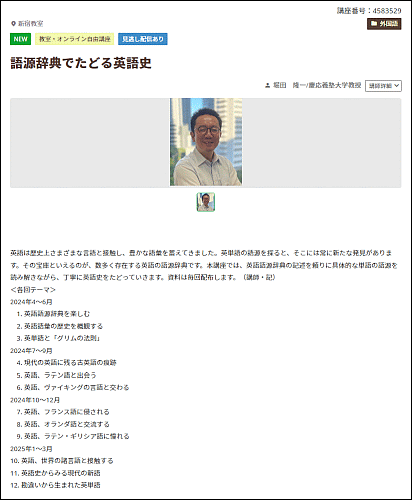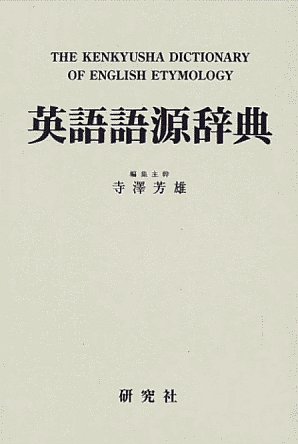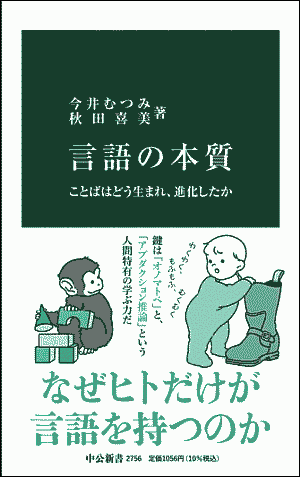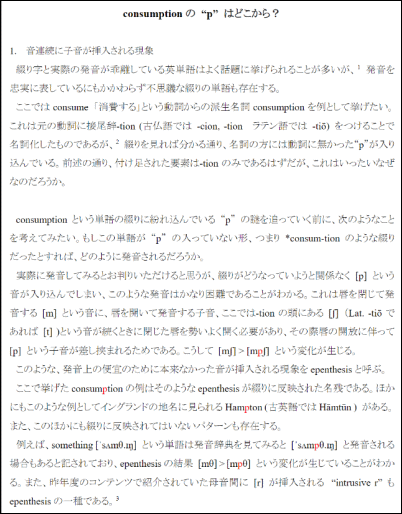2024-07-05 Fri
■ #5548. 音変化と類推の峻別を改めて考える [sound_change][analogy][neogrammarian][phonetics][phonology][morphology][language_change][history_of_linguistics][comparative_linguistics][lexical_diffusion][terminology]
比較言語学 (comparative_linguistics) の金字塔というべき,青年文法学派 (neogrammarian) による「音韻変化に例外なし」の原則 (Ausnahmslose Lautgesetze) は,音変化 (sound_change) と類推 (analogy) を峻別したところに成立した.以来,この言語変化の2つの原理は,相容れないもの,交わらないものとして解釈されてきた.この2種類を一緒にしたり,ごっちゃにしたら伝統的な言語変化論の根幹が崩れてしまう,というほどの厳しい区別である.
しかし,この伝統的なテーゼに対する反論も,断続的に提出されてきた.例外なしとされる音変化も,視点を変えれば一律に適用された類推として解釈できるのではないか,という意見だ.実のところ,私自身も語彙拡散 (lexical_diffusion) をめぐる議論のなかで,この2種類の言語変化の原理は,互いに接近し得るのではないかと考えたことがあった.
この重要な問題について,Fertig (99--100) が議論を展開している.Fertig は2種類を峻別すべきだという伝統的な見解に立ってはいるが,その議論はエキサイティングだ.今回は,Fertig がそのような立場に立つ根拠を述べている1節を引用する (95) .単語の発音には強形や弱形など数々の異形 (variants) があるという事例紹介の後にくる段落である.
The restriction of the term 'analogical' to processes based on morpho(phono)logical and syntactic patterns has long since outlived its original rationale, but the distinction between changes motivated by grammatical relations among different wordforms and those motivated by phonetic relations among different realizations of the same wordform remains a valid and important one. The essence of the Neogrammarian 'regularity' hypothesis is that these two systems are separate and that they interface only through the mental representation of a single, citation pronunciation of each wordform. The representations of non-citation realizations are invisible to the morphological and morphophonological systems, and relations among different wordforms are invisible to the phonetic system. If we keep in mind that this is really what we are talking about when we distinguish analogical change from sound change, these traditional terms can continue to serve us well.
言語変化を論じる際には,一度じっくりこの問題に向き合う必要があると考えている.
・ Fertig, David. Analogy and Morphological Change. Edinburgh: Edinburgh UP, 2013.
2024-07-04 Thu
■ #5547. father の語形について再び [phonetics][grimms_law][verners_law][analogy][etymology][relationship_noun][analogy][hybrid][contamination][sound_change][consonant][fricativisation]
father という単語は,比較言語学でよく引き合いにだされる語の代表格だ.ところがなのか,だからこそなのか,この語形を音韻論・形態論的に説明するとなるとかなり難しい.現在の語形は音変化の結果なのか,あるいは類推の結果なのか.おそらく両方が複雑に入り交じった,ハイブリッドの例なのか.基本語ほど,語源解説の難しいものはない.
ここでは Fertig (78) の contamination 説を引用しよう.ただし,これは1つの説にすぎない.
The d > ð change in English father (<OE fæder is a popular example of contamination). (The parallel case of mother is cited less often in this context, for reasons that are not entirely clear to me.) The claim is that, by regular sound change, this word should have -d- rather than -ð- both in Old English (as it apparently did) and in Modern English (as is clearly does not). The -ð- in Modern English is thus attributed to contaminating from the semantically related word brother, which has had -ð- throughout the history of English . . . .
father の第2子音を説明するというのは,英語史上最も難しい問題の1つといってよい.なぜ father が father なのか,その答えはまだ出ていない.以下,関連する記事を参照.
・ 「#480. father とヴェルネルの法則」 ([2010-08-20-1])
・ 「#481. father に起こった摩擦音化」 ([2010-08-21-1])
・ 「#698. father, mother, brother, sister, daughter の歯音 (1)」 ([2011-03-26-1])
・ 「#699. father, mother, brother, sister, daughter の歯音 (2)」 ([2011-03-27-1])
・ 「#703. 古英語の親族名詞の屈折表」 ([2011-03-31-1])
・ 「#2204. d と th の交替・変化」 ([2015-05-10-1])
・ 「#4230. なぜ father, mother, brother では -th- があるのに sister にはないのですか? --- hellog ラジオ版」 ([2020-11-25-1])
・ Fertig, David. Analogy and Morphological Change. Edinburgh: Edinburgh UP, 2013.
2024-05-29 Wed
■ #5511. 6月8日(土)の朝カル新シリーズ講座第3回「英単語と「グリムの法則」」のご案内 [asacul][notice][kdee][etymology][hel_education][helkatsu][link][lexicology][vocabulary][grimms_law][verners_law][consonant][stress][phonetics][loan_word][french][latin][voicy][heldio]
新年度より,朝日カルチャーセンター新宿教室にてシリーズ講座「語源辞典でたどる英語史」を月に一度のペースで開講しています.
これまでに第1回「語源辞典でたどる英語史」を4月27日(土)に,第2回「英語語彙の歴史を概観する」を5月8日(土)に開講しましたが,それぞれ驚くほど多くの方にご参加いただき盛会となりました.ご関心をお寄せいただき,たいへん嬉しく思います.
第3回「英単語と「グリムの法則」」は来週末,6月8日(土)の 17:30--1900 に開講されます.シリーズを通じて,対面・オンラインによるハイブリッド形式での開講となり,講義後の1週間の「見逃し配信」サービスもご利用可能です.シリーズ講座ではありますが,各回はおおむね独立していますし,「復習」が必要な部分は補いますので,シリーズ途中からの参加でも問題ありません.ご関心のある方は,こちらよりお申し込みください.

2回かけてのイントロを終え,次回第3回は,いよいよ英語語彙史の各論に入っていきます.今回のキーワードはグリムの法則 (grimms_law) です.この著名な音規則 (sound law) を理解することで,英語語彙史のある魅力的な側面に気づく機会が増すでしょう.グリムの法則の英語語彙史上の意義は,思いのほか長大で深遠です.英語語彙学習に役立つことはもちろん,印欧語族の他言語の語彙への関心も湧いてくるだろうと思います.『英語語源辞典』(研究社,1997年)をはじめとする語源辞典や,一般の英語辞典も含め,その使い方や読み方が確実に変わってくるはずです.
講座ではグリムの法則の関わる多くの語源辞典で引き,記述を読み解きながら,実践的に同法則の理解を深めていく予定です.どんな単語が取り上げられるかを予想しつつ講座に臨んでいただけますと,ますます楽しくなるはずです.『英語語源辞典』をお持ちの方は,巻末の「語源学解説」の 3.4.1. Grimm の法則,および 3.4.2. Verner の法則 を読んで予習しておくことをお薦めします.

参考までに,本シリーズに関する hellog の過去記事へのリンクを以下に張っておきます.第3回講座も,多くの皆さんのご参加をお待ちしております.
・ 「#5453. 朝カル講座の新シリーズ「語源辞典でたどる英語史」が4月27日より始まります」 ([2024-04-01-1])
・ 「#5481. 朝カル講座の新シリーズ「語源辞典でたどる英語史」の第1回が終了しました」 ([2024-04-29-1])
・ 「#5486. 5月18日(土)の朝カル新シリーズ講座第2回「英語語彙の歴史を概観する」のご案内」 ([2024-05-04-1])
(以下,後記:2024/05/30(Thu))
・ 寺澤 芳雄(編集主幹) 『英語語源辞典』 研究社,1997年.
2024-04-03 Wed
■ #5455. 矢冨弘先生との heldio トークと「日英の口の可動域」 [voicy][heldio][helwa][phonetics][pronunciation][japanese][do-periphrasis][emode][sociolinguistics][name_project][vowel][helkatsu]
先日,英語史研究者である矢冨弘先生(熊本学園大学)とお会いする機会がありました.「名前プロジェクト」 (name_project) の一環として,他のプロジェクトメンバーのお二人,五所万実先生(目白大学)と小河舜先生(上智大学)もご一緒でした.
そこで主に「名前」の問題をめぐり Voicy heldio/helwa の生放送をお届けしたり収録したりしました.以下の3本をアーカイヴより配信しています.いずれも長めですので,お時間のあるときにでもお聴きいただければ.
(1) heldio 「#1034. 「名前と英語史」 4人で生放送 【名前プロジェクト企画 #3】」(59分)
(2) helwa 「【英語史の輪 #113】「名前と英語史」生放送のアフタートーク生放送」(←こちらの回のみ有料のプレミアム限定配信です;60分)
(3) heldio 「#1038. do から提起する新しい英語史 --- Ya-DO-me 先生(矢冨弘先生)教えて!」(20分)
その後,矢冨先生がご自身のブログにて,上記の収録と関連する内容の記事を2本書かれていますので,ご紹介します.
・ 「3月末の遠征と4月の抱負」
・ 「日英の口の可動域」
2つめの「日英の口の可動域」は,上記 (2) の helwa 生放送中に,名前の議論から大きく逸れ,発音のトークに花が咲いた折に飛びだした話題です.トーク中に,矢冨先生が日本語と英語では口の使い方(母音の調音点)が異なることを日頃から意識されていると述べ,場が湧きました.英語で口の可動域が異なることを示す図をお持ちだということも述べられ,その後リスナーの方より「その図が欲しい」との要望が出されたのを受け,このたびブログで共有していただいた次第です.皆さん,ぜひ英語の発音練習に活かしていただければ.
ちなみに,矢冨先生についてもっと詳しく知りたい方は,khelf 発行の『英語史新聞』第6号と第7号をご覧ください.それぞれ第3面の「英語史ラウンジ by khelf」にて,2回にわたり矢冨先生のインタビュー記事を掲載しています.
矢冨先生,今後も様々な「hel活」 (helkatsu) をよろしくお願いします!
2024-03-22 Fri
■ #5443. blow - blew - blown --- 古英語強変化動詞第7類 [oe][verb][conjugation][preterite][morphology][phonetics][paradigm][yod-dropping][sound_change][spelling_pronunciation_gap][voicy][heldio]
昨日の記事「#5442. 『ライトハウス英和辞典 第7版』の付録「つづり字と発音解説」」 ([2024-03-21-1]) で,「吹く」を意味する動詞 blow の現代英語での活用とその発音に触れた.とりわけ blew と綴って /bluː/ と発音する件に注意を促した.この問題をめぐって,ここ数日間の Voicy heldio でも取り上げてきたので,ぜひ聴取していただければ.
・ 「#1023. new は「ニュー」か「ヌー」か? --- 音変化と語彙拡散」
・ 「#1025. blow - blew 「ブルー」 - blown」
・ 「#1026. なぜ now と know は発音が違うの?」
blow は古英語においては強変化動詞第7類に属する動詞だった.同じ第7類に属し比較されるべき動詞として know, grow, throw が挙げられる.各々,現代英語で know - knew - known; grow - grew - grown; throw - threw - thrown のように blow とよく似た活用を示す.この4動詞について,古英語での4主要形をまとめておこう(4主要形など古英語強変化動詞の詳細については「#2217. 古英語強変化動詞の類型のまとめ」 ([2015-05-23-1]) や「#42. 古英語には過去形の語幹が二種類あった」 ([2009-06-09-1]) を参照).
| 不定詞 | 第1過去 | 第2過去 | 過去分詞 | |
|---|---|---|---|---|
| "blow" | blāwan | blēow | blēowon | blāwen |
| "know" | cnā_wan | cnēow | cnēowon | cnāwen |
| "grow" | grōwan | grēow | grēowon | grōwen |
| "throw" | þrāwan | þrēow | þrēowon | þrōwen |
第1過去あるいは第2過去の語幹母音に注目すると,もともとの古英語では /eːɔw/ ほどだった.これが千年の時を経て,/eːɔw/ > /eːʊ/ > /eʊ/ > /ˈɪʊ/ > /ɪˈʊ/ > /juː/ > /uː/ のように変化してきたのである.
現代英語で似た活用をするさらに他の動詞として,fly - flew - flown; draw - drew - drawn; slay - slew - slain がある.ただし,古英語では fly は第2類,draw と slay は第6類であり,blow とは所属が異なった.これらはおそらく blow タイプとの類推 (analogy) により,活用が似たものになってきたのだろう.各動詞はそれぞれ独自の歴史を背負っており,変化の記述も一筋縄では行かないものである.
・ 中尾 俊夫 『音韻史』 英語学大系第11巻,大修館書店,1985年.
2024-03-21 Thu
■ #5442. 『ライトハウス英和辞典 第7版』の付録「つづり字と発音解説」 [spelling][pronunciation][spelling_pronunciation_gap]lexicography][dictionary][lighthouse7][yod-dropping][vowel][diphthong][elt][phonetics]
「#5438. 紙の辞書の魅力 --- 昨秋出版の『ライトハウス英和辞典 第7版』より」 ([2024-03-17-1]) で紹介した,昨秋出版された老舗英和辞典の新版について再び取り上げます.
同辞書の巻末の付録が充実しています.付録コンテンツのトップを飾るのが「つづり字と発音解説」 (pp. 1666--77) です.英語の綴字と発音の乖離 (spelling_pronunciation_gap) の問題に関心のある向きは,ぜひ熟読してみると発見が多いと思います.
昨日の Voicy 「英語の語源が身につくラジオ (heldio)」にて「#1025. blow - blew 「ブルー」 - blown」と題して,blew /bluː/ の綴字と発音の関係についてお話ししました.「ブリュー」の発音で覚えていた方もいるかもしれませんが,正しくは(yod-dropping が効いているので) blue と同じ「ブルー」の発音です.drew, flew, grew, slew, threw も同様で,/juː/ ではなく /uː/ の母音を示します.
では,『ライトハウス英和辞典 第7版』の「つづり字と発音解説」より,blew の発音問題にも関連する uː の項目 (p. 1668) を覗いてみましょう.
15 uː
日本語の「ウー」より唇を小さく丸めて前に突き出すようにして「ウー」と長めに発音する.
・規則的なつづり字
(ōō): boot /búːt/ 長靴,food /fúːd/ 食物
s, ch, j, l, r の後で
(ü): super /súːpɚ | -pə/ すばらしい,June /ʤúːn/ 6月,blue /blúː/ 青い,rule /rúːl/ 規則
ew (=ü): chew /ʧúː/ よくかむ,Jew /ʤúː/ ユダヤ人,blew /blúː/ blow の過去形,crew /krúː/ 乗組員
・注意すべきつづり字
(ui): suit /súːt/ (衣服の)ひとそろい,juice /ʤúːs/ 汁,fruit /frúːt/ 果物
ou (=ōō): group /grúːp/ 群れ,soup /súːp/ スープ
しっかり <ew> ≡ /uː/ の関係がカバーされているのが心強いですね.

・ 赤須 薫(編) 『ライトハウス英和辞典 第7版』 研究社,2023年.
2024-03-14 Thu
■ #5435. 仮名の濁点と英語摩擦音3対の関係 [syllable][phonology][grammatology][hiragana][japanese][writing][diacritical_mark][phonetics][consonant][fricative][th][mond][helwa]
現代日本語の慣習によれば,平仮名の「か」に対して「が」,「さ」にたいして「ざ」,「た」に対して「だ」のように濁音には濁点が付される.阻害音について,清音に対して濁音ヴァージョンを明示するための発音区別符(号) (diacritical_mark) だ.ハ行子音を例外として,原則として無声音に対して有声音を明示するための記号といえる.濁点のこの使用方針はほぼ一貫しており,体系的である.
一方,英語の摩擦音3対 [f]/[v], [s]/[z], [θ]/[ð] については,正書法上どのような書き分けがなされているだろうか.この問題については,1ヶ月ほど前に Mond に寄せられた目の覚めるような質問を受け,それへの回答のなかで部分的に議論した.
・ boss ってなんで s がふたつなの?と8歳娘に質問されました.なんでですか?

[f] と [v] については,それぞれ <f> と <v> で綴られるのが大原則であり,ほぼ一貫している.of [əv] のような語はあるが,きわめて例外的だ.
[s] と [z] の書き分けに関しては,上記の回答でも,かなり厄介な問題であることを指摘した.<s>, <ss>, <se>, <ce>; <z>, <zz>, <ze> などの綴字が複雑に絡み合ってくるのだ.なるべく書き分けたいという風味はあるが,そこに一貫性があるとは言いがたい.
[θ] と [ð] に至っては,いずれも <th> という1種類の綴字で書き表わされ,書き分ける術はない.歴史的にいえば,書き分けようという意図も努力も感じられなかったとすらいえる.
以上より序列をつければ,
・ 仮名の濁点を利用した書き分けは「トップ合格」
・ [f]/[v] の書き分けは「合格」
・ [s]/[z] の書き分けは「ギリギリ及第」
・ [θ]/[ð] の書き分けは「落第」
となる.この序列づけのインスピレーションを与えてくれたのは Daniels (64) の次の1文である,
Phonemic split sometimes brings new letters or spellings (e.g. Middle English <v> alongside <f> when French loans caused voicing to become significant; cf. also <vision> vs <mission>), sometimes not---English used <ð> and <þ> indifferently, even in a single manuscript, for both the voiced and voiceless interdentals, a situation persisting with Modern English <th> due to low functional load. Japanese, on the other hand, uses diacritics on certain kana for the same purpose.
なお,今回の話題については,先行して Voicy のプレミアムリスナー限定配信チャンネル「英語史の輪」 (helwa) の配信回「【英語史の輪 #95】boss ってなんで s が2つなの?」(2月17日配信)で取り上げている.
・ Daniels, Peter T. "The History of Writing as a History of Linguistics." Chapter 2 of The Oxford Handbook of the History of Linguistics. Ed. Keith Allan. Oxford: OUP, 2013. 53--69.
2023-11-07 Tue
■ #5307. Birmingham の3つの発音 [pronunciation][name_project][onomastics][toponymy][spelling_pronunciation][palatalisation][phonetics][dative][h]
イギリスの都市 Birmingham の発音は /ˈbəːmɪŋəm/ である.イギリス地名によくあることだが,長い歴史のなかで発音が短化・弱化してきた結果である.この地名の場合 -ham の頭子音が脱落してしまっている.
一方,同名のアメリカの都市では,この h が保存されており /ˈbɚːmɪŋhæm/ と発音される./h/ が保存されているというよりは,むしろ綴字発音 (spelling_pronunciation) として復活されたというほうが適切かもしれない.
そして,イギリスの都市については,もう1つ伝統的で大衆的な発音があるという.それは /ˈbrʌməʤm̩/ というものである.この話題とその周辺の話題について,Clark (476) が次のように述べている.
Further complications arise from a sporadic palatalisation and assibilation of -ing(-) > [ɪnʤ] that affects suffix and infix alike: e.g. Lockinge, Wantage < OE Waneting (also originally a stream-name --- PN Berks.: 17--18, 481--2), and also the traditional, now vulgar, /brʌməʤm̩/ for Birmingham (PN Warks.: 34--6). Explanations have ranged from variant development of gen. pl. -inga- . . . to fossilised survival of a PrOE locative in *ingi, assumed to have dominated development of the names in question in the way that dative forms not uncommonly do . . . .
この説が正しいとすると,くだんの -ing の起源となる屈折語尾母音の小さな違いによって,公式な発音 /ˈbəːmɪŋəm/ と大衆的な発音 /ˈbrʌməʤm̩/ が分かれてしまったことになる.そして,この異形態の揺れが,場合によっては1500年ほどの歴史を有するかもしれない,ということになる.
・ Clark, Cecily. "Onomastics." The Cambridge History of the English Language. Vol. 1. Ed. Richard M. Hogg. Cambridge: CUP, 1992. 452--89.
2023-10-07 Sat
■ #5276. 世界英語における子音と母音の変容 --- 大石晴美(編)『World Englishes 入門』(昭和堂,2023年)の序章より [world_englishes][vowel][diphthong][consonant][contact][substratum_theory][phonetics][phonology][variety][th][we_nyumon]
「#5268. 大石晴美(編)『World Englishes 入門』(昭和堂,2023年)」 ([2023-09-29-1]) で紹介したこちらの本の序章において,標準英語で用いられる子音や母音の音素が,世界英語の諸変種では母語からの影響を受けて異なる発音で代用される例が挙げられている.
まず「子音が母語からの影響を受ける例」を挙げてみよう (12) .
| 子音の変容 | 英語変種 |
|---|---|
| [θ] [ð] を [t] [d] で代用(歯摩擦音が歯茎閉鎖音になる) | インド英語 [th],ガーナ英語,フィリピン英語,シンガポール英語,マレーシア英語,日本の英語,モンゴルの英語,ミャンマーの英語 |
| [θ] [ð] を [s] [z] で代用(歯摩擦音が歯茎摩擦音になる) | ドイツの英語,スロベニアの英語,韓国の英語 [s],日本の英語,モンゴルの英語 |
| [f] を [p] で代用(唇歯摩擦音が両唇閉鎖音になる) | フィリピン英語,韓国の英語 [ph],モンゴルの英語,ミャンマーの英語 |
| [v] と [w] の区別をしない | ドイツの英語,フィンランドの英語,インド英語,中国語母語話者の英語,モンゴルの英語 |
/θ, ð/ の異なる実現については「#4666. 世界英語で扱いにくい th-sound」 ([2022-02-04-1]) も参照.
次に「母音が母語からの影響を受ける例」を挙げる (12) .
| 母音の変容・添加 | 英語変種 |
|---|---|
| 二重母音が長母音になる | ジャマイカ英語,インド英語 |
| 二重母音が短い単母音になる | ガーナ英語,フィリピン英語,シンガポール英語,マレーシア英語 |
| 子音の後に母音が入る | 韓国の英語,日本の英語,モンゴルの〔英〕語 |
| 長母音と短母音の区別をしない | フィリピン英語,シンガポール英語,マレーシア英語,韓国の英語,スロベニアの英語 |
日本語母語話者による英語発音の癖もいくつか含まれているが,いずれも日本語母語話者に限られているわけではないことがわかり興味深い.サンプルとはいえ,このような一覧を掲げてくれるのはたいへんありがたいですね.

・ 大石 晴美(編) 『World Englishes 入門』 昭和堂,2023年.
2023-09-28 Thu
■ #5267. 言語におけるアイコン性について考えてみませんか? [iconicity][sound_symbolism][onomatopoeia][phonaesthesia][reduplication][phonetics][prosody]
昨日の Voicy 「英語の語源が身につくラジオ (heldio)」にて「#849. 言語における恣意性とアイコン性と題する放送回を配信した.
アイコン性 (iconicity) は,連日本ブログで取り上げている,今井むつみ・秋田喜美(著)『言語の本質』(中公新書,2023年)でも大きく取り上げられており,とりわけ第2章「アイコン性 --- 形式と意味の類似性」で詳しく論じられている.「ドキドキ」「そろりそろり」「グングン」「ブーブー」のような日本語オノマトペ (onomatopoeia) に典型的にみられる語形の重複 (reduplication) に始まり,とりわけ清音/濁音,母音や子音の音質,プロソディなど音象徴 (sound_symbolism) に代表される音のアイコン性が注目されている.
アイコン性とは,現実世界のモノやコトを言語に写し取る際に自然と付随してくる類似性のことである.ヒトは,現実のモノやコトを100%そのままに言語にコピーすることはできない.完全なレプリカはどうしても作り得ないのである.ヒトの能力には限界があるし,そもそも言語という媒体(ここでは話し言葉に限定して考える)にも制限がある.せいぜいできるのは,現実を影のように近似的に写し取ることぐらいである.
しかし,それぐらい緩い写し取りであるから,むしろ上記の制限のなかではなかなかに自由であり,大きな方向付けはなされるものの,その範囲内ではヴァリエーションも豊富である.完全同一ではなく緩い類似性にすぎないからこそ,適度な自然さと適度な遊びがあって利用しやすいということだろう.
言語におけるアイコン性は,語形や発音について言われることが多いが,統語やより大きな単位についても言えることがありそうだ.また,話し言葉に限定せず書き言葉に考察範囲を拡げれば,視覚的な媒体であるからアイコン性の活躍の場は激増するだろう.言語は恣意的であると同時に,多分にアイコン的である.
皆さんも,言語におけるアイコン性について事例を挙げつつ考えてみませんか.上記の heldio 配信回のコメント欄などにお寄せいただければ.

・ 今井 むつみ・秋田 喜美 『言語の本質 --- ことばはどう生まれ,進化したか』 中公新書,2023年.
2023-09-18 Mon
■ #5257. 最近の Mond での回答,5件 [mond][sobokunagimon][politeness][simplification][contact][heldio][youtube][hel_education][phonetics][prestige][speed_of_change][language_myth][link]
ここ数日間で,知識共有サービス Mond に寄せられてきた言語系の質問に5件ほど回答しました.こちらでもリンクを共有します.
(1) 敬語の表現が少ない英語の話者には,日本人よりも敬意を示す機会が少ないのでしょうか?
(2) 歴史的に見て「言語の変化=簡略化」なのでしょうか?
(3) ブログ,ラジオ,YouTubeなど,様々なメディアを通じて英語の歴史や語源に関する情報を発信していらっしゃいますが,これらのメディアごとにアプローチやコンセプトを変えて情報を提供していますか?
(4) なぜ人々は(もちろん個人差はあれど)イギリスやフランスなどのアクセントを“魅力的”とし,アジアやインドのアクセントを“魅力がない”とするのでしょうか?
(5) 言語の変化は,どの程度の速度で起こりますか? 例えば,新しい言葉や表現は,どのくらいの頻度で生まれるものなのでしょうか?
Mond に寄せられる言語系の質問は多様ですが,日本語と諸外国語との比較というジャンルの質問が目立ちます.今回も (1) や (4) がそのジャンルに属するかと思います.母語は万人にとって特別な存在であり,あまりに思い入れが強いために,他の言語と比べてきわめて特異な性質をもっているものと錯覚してしまうことがしばしば起こります.とりわけ語学を通じて理解の深まった他言語と比較するときに,母語の際立った言語特徴が目に付くことが多く,母語の特別視に拍車がかかります.
長年言語学に触れてきた経験から感じることは,母語の特別視は往々にして行き過ぎる傾向があるということです.確かに各々の言語には固有の特徴があるもので,その点では日本語も例外ではないのですが,日本語のみに観察される言語特徴というのは,さほど多くあるわけではなく,広く古今東西の諸言語を見渡せば類例はおおよそ見つかるものです.言語の素朴な疑問に関する直感は,当たることもありますが,割と外れることも多いのです.
今回の5件の質問のうちの3つ,(1), (2), (4) は,振り返ってみれば,言語にまつわる神話 (language_myth) に関わる質問だったように思います.言語学的な考察を通じて,言語の化けの皮を一枚一枚剥いでいくのが,何ともエキサイティングですね.
2023-08-31 Thu
■ #5239. t の弾音化はいつから? --- Mond の質問 [mond][sobokunagimon][phonetics][r][ame]
先日,知識共有サービス Mond でいただいた質問に回答しました.
![[t] の弾音化はいつから? --- Mond の質問](lib/mond_20230831.png)
結論としては,t の弾音化 (flapping or tapping) は遅くとも中英語以降に生じていた,ということになります.イングランドで異音として行なわれていたものが,17世紀以降にアメリカを含む世界各地に移植・継承されたものと思われます.t の弾音化はアメリカ英語に典型的な特徴であるという印象が強いですが,その他の多くのアメリカ英語の特徴とともに,実際の起源は中世イングランドに求められそうです.
回答記事では今回の調査に際して当たった典拠を記していませんでしたが,主に Dobson (Vol. 2, p. 956) と Minkova (147--48) に拠りました.Dobson の記述をメモとして残しておきます.
(4) Intervocalic [t] becomes [r]
385. From early in the sixteenth century there appear the forms porridge, porringer, &c. for earlier pottage, potager (see OED, s.vv.), though the older forms also survived (thus Salesbury has potanger and Bullokar potage). Coles gives porridg and porringer as 'phonetic' spellings of pottage and pottinger, from which it appears that written forms with t may sometimes conceal spoken forms with [r].
関連して「#61. porridge は愛情をこめて煮込むべし」 ([2009-06-28-1]),および r と rhotic の記事群も参照.
・ Dobson, E. J. English Pronunciation 1500--1700. 2nd ed. 2 vols. Oxford: OUP, 1968.
・ Minkova, Donka. A Historical Phonology of English. Edinburgh: Edinburgh UP, 2014.
2023-08-20 Sun
■ #5228. 古英語の人名の愛称には2重子音が目立つ [oe][anglo-saxon][onomastics][name_project][personal_name][consonant][phonetics][shortening][hypocorism][germanic][sound_symbolism]
古英語の人名の愛称 (hypocorism) の特徴は何か,という好奇心をくするぐる問いに対して,Clark (459--60) が先行研究を参考にしつつ,おもしろいヒントを与えてくれている.主に音形に関する指摘だが,重子音 (geminate) が目立つのだという.
Clearly documented hypocoristics often show modified consonant-patterns . . . . Thus, the familiar form Saba (variant: Sæba) by which the sons of the early-seventh-century King Sǣbeorht (Saberctus) of Essex called their father showed the first element of the full name extended by the initial consonant of the second, in a way perhaps implying that medial consonants following a stressed syllable may have been ambisyllabic . . . . In the Germanic languages generally, a consonant-cluster formed at the element-junction of a compound name was often simplified in the hypocoristic form to a geminate, Old English examples including the masc. Totta < Torhthelm, the fem. Cille < Cēolswīð, and also the masc. Beoffa apparently derived from Beornfrið . . . .
重子音化や子音群の単純化といえば,日本語の「さっちゃん」「よっちゃん」「もっくん」「まっさん」等々を想起させる.日本語の音韻論では重子音(促音)そのものの生起が比較的限定されているといってよいが,名前やその愛称などにはとりわけ多く用いられているような印象がある.音象徴 (sound_symbolism) の観点から,何らかの普遍的な説明は可能なのだろうか.
・ Clark, Cecily. "Onomastics." The Cambridge History of the English Language. Vol. 1. Ed. Richard M. Hogg. Cambridge: CUP, 1992. 452--89.
2023-06-06 Tue
■ #5153. knowledge, Greenwich, spinach の語末有声子音 [verners_law][consonant][stress][phonetics][spelling]
標題の3語の発音は各々次のようになる.語末子音に注目されたい.
・ knowledge [ˈnɑlɪʤ]
・ Greenwich [ˈgrɪnɪʤ, ˈgrɛnɪʤ, ˈgrɛnɪʧ]
・ spinach [ˈspɪnɪʧ, ˈspɪnɪʤ]
通常の綴字と発音の関係でいえば <dge> ≡ [ʤ],<ch> ≡ [ʧ] が普通である.knowledge は予想通りだが,Greenwich, spinach については <ch> ≡ [ʤ] の発音もあり得るという点でやや異質である.
これらの語における語末の有声破擦音 [ʤ] は,本来の無声破擦音が近代英語期に有声化したものである.英語史内での Verner's Law として知られる音変化だ (cf. 「#858. Verner's Law と子音の有声化」 ([2011-09-02-1])).「アクセントが子音の直前にないとき,その子音は有声化する」という規則を示す音変化で,例としてよく挙げられるのは ˈabsolute -- abˈsolve, ˈanxious -- anxˈiety, ˈexecute -- exˈecutive, exhiˈbition -- exˈhibit, ˈluxury -- luxˈurious, ˈoff -- of など摩擦音 [s, z, ks, gz, ʃ, ʒ, f, v] が関わるペアだが,標題の語のように破擦音 [[ʧ, ʤ]] が関わるものもある.
Prins (225) より,後者の例とその説明を引こう.
5. ʧ > ʤ
ME knowleche > MoE knowledge partriche > partridge spinach > spinach ['spinidʒ]
and in the suffix -wich in place-names: Norwich [noridʒ], Greenwich [grinidʒ], Woolwich [wulidʒ], Harwich [hæridʒ], Bromwich [brʌmidʒ]
Instead of the obsolete old pronunciation Ipswich [ipsidʒ] we find now [ipswitʃ].
The voicing is also found in MoE ajar < Scots and Nth dialect achar < on char-e (OE čerr, 'turn').
引用の最後にある通り,ajar が古英語 on cierre に遡るというのが興味深い.
・ Prins, A. A. A History of English Phonemes. 2nd ed. Leiden: Leiden UP, 1974.
2023-05-21 Sun
■ #5137. heldio 「#716. 英語史を学ぶなら音声学もしっかり学ぼう」の収録の様子を動画撮影しました --- 英語史情報発信の活性化のために [voicy][heldio][heltube][phonetics][phonology][hel_education][youtube]
毎朝6時に配信している Voicy 「英語の語源が身につくラジオ (heldio)」の5月17日分の放送回として「#716. 英語史を学ぶなら音声学もしっかり学ぼう」をお届けしました.このブログや heldio などを通して英語史に関心を抱き,もう一歩深く入り込んでみたいという方は,ぜひ音声学 (phonetics) と音韻論 (phonology) を学んでいただければと思います.
上記放送回で,英語史を学ぶに当たって音声学も一緒に学びたい理由として4点を挙げました.以下,箇条書きしておきますので復習してください.
(1) 話し言葉こそが universal だから
(2) 現在と過去を行き来するために
(3) 音の変化が文法の変化をもたらしたから
(4) 話し言葉と書き言葉との関係を押さえるために
hellog と heldio の関連記事・放送回を3点ほど掲げておきます.
・ hellog 「#4231. 英語史のための音声学・音韻論の入門書」 ([2020-11-26-1])
・ heldio 「#712. ハヒフヘホ --- khelf メンバーと学ぶコトバの「音」入門」
・ heldio 「#703. 母音「あいうえお」入門 --- ゆる言語学ラジオ(著)『言語沼』にインスピレーションを受けて」
さて,今日のこの記事の主眼は「英語史を学ぶなら音声学も一緒に」を改めて叫ぶことではありません.上記 heldio 放送回 #716 の収録の様子を動画として撮影したので,それをご覧くださいという宣伝です.これは Voicy 収録の様子をただお見せしたいというわけではなく,学術・教育の情報発信の手段として Voicy のような音声メディアが優れていることを,潜在的発信者の方々に伝えたかったからです.YouTube などの動画メディアは制作に相当な手間暇がかかりますが,音声メディアであれば,ずっと優れたタイパやコスパで情報を発信できます.
上記 heldio 放送回 #716 は,3チャプター合計で14分51秒ほど私が実際に話して収録しています.この収録の様子の一部始終を動画撮影してみたのですが,heldio 収録には含まれない前口上,チャプター間の一服,締めの言葉をすべて含め,動画撮影の総時間は21分20秒でした.この後,放送回やチャプターのタイトル付け,ハッシュタグ付け,リンク貼り,配信予約などの作業が続きますが,それでもプラス5分程度です.つまり,15分弱の1回の放送回の制作にかかる実質的な時間は,20分ほどだということです.もし YouTube で同じコンテンツを制作しようとすると,かりに最小限の編集で済ませるにせよ,20分という時間では無理でしょう.少なくとも2,3倍の時間はかかります.
以下がその動画「heldio 2023年5月17日放送回の収録の様子」です(YouTube 版はこちらからどうぞ).
音声メディアなどを通じて英語史の情報を発信する方が増えてくれるとよいなと思っています.ぜひ参考になれば.(なお,以前にも一度「#4815. Voicy 「英語の語源が身につくラジオ (heldio)」の収録の様子です」 ([2022-07-03-1]) として heldio 収録の様子をお届けしています.)
2023-05-01 Mon
■ #5117. 語中音添加についてのコンテンツを紹介 [voicy][heldio][start_up_hel_2023][hel_contents_50_2023][phonetics][phonology][sound_change][consonant][epenthesis][khelf][panopto][youtube][heltube][fujiwarakun]
この GW 中は毎日のように Voicy 「英語の語源が身につくラジオ (heldio)」にて khelf(慶應英語史フォーラム)メンバーとの対談回をお届けしています.一方,khelf では「英語史コンテンツ50」も開催中です.そこで両者を掛け合わせた形でコンテンツの紹介をするのもおもしろそうだ思い,先日「#5115. アルファベットの起源と発達についての2つのコンテンツ」 ([2023-04-29-1]) を紹介しました.
今回も英語史コンテンツと heldio を引っかけた話題です.4月20日に大学院生により公開されたコンテンツ「#7. consumption の p はどこから?」に注目します.

今回,このコンテンツの heldio 版を作りました.作成者の藤原郁弥さんとの対談回です.「#700. consumption の p はどこから? --- 藤原郁弥さんの再登場」として配信していますので,ぜひお聴きください.発音に関する話題なのでラジオとの相性は抜群です.
コンテンツや対談で触れられている語中音添加 (epenthesis) は,古今東西でよく生じる音変化の1種です.今回の consumption, assumption, resumption の /p/ のほかに epenthesis が関わる英単語を挙げてみます.
・ September, November, December, number の /b/
・ Hampshire, Thompson, empty の /p/
・ passenger, messenger, nightingale の /n/
そのほか she の語形の起源をめぐる仮説の1つでは,epenthesis の関与が議論されています(cf. 「#4769. she の語源説 --- Laing and Lass による "Yod Epenthesis" 説の紹介」 ([2022-05-18-1])).
epenthesis と関連するその他の音変化については「#739. glide, prosthesis, epenthesis, paragoge」 ([2011-05-06-1]) もご参照ください.
対談中に私が披露した「両唇をくっつけずに /m/ を発音する裏技」は,ラジオでは通じにくかったので,こちらの動画を作成しましたのでご覧ください(YouTube 版はこちら).音声学的に味わっていただければ.
2022-10-29 Sat
■ #4933. wh の発音 [pronunciation][spelling][phonetics][phonology][phoneme][ame_bre][digraph][consonant]
<wh> という2重字 (digraph) は疑問詞のような高頻度語に現われるので馴染み深い.しかし,この2重字に対応する発音についてよく理解している英語学習者は多くない.
what, which を「ホワット」「フィッチ」とカタカナ書きしたり発音したりする人は多いかもしれないが,イギリス標準英語においては「ワット」「ウィッチ」である.つまり,Watt, witch とまったく同じ発音となる.音声学的にいえば無声の [ʍ] ではなく,あくまで有声の [w] ということだ.
上記はイギリス標準英語の話しであり,アメリカ英語はその限りではなく what, which は各々 [ʍɑt], [ʍɪtʃ] が規範的といわれることもある.しかし,実際上は有声の [w] での発音が広まってきているようだ.
<wh> の表わす子音の現状について Cruttenden を参照してみよう.
In CGB (= Conspicuous General British) and in GB speech in a more formal style (e.g. in verse-speaking), words such as when are pronounced with the voiceless labial-velar fricative [ʍ]. In such speech, which contains oppositions of the kind wine, whine, . . . /ʍ/ has phonemic status. Among GB speakers the use of /ʍ/ as a phoneme has declined rapidly. Even if /ʍ/ does occur distinctively in any idiolect, it may nevertheless be interpreted phonemically as /h/ + /w/ . . . . (Cruttenden 233)
ちなみに上記引用文中の "CGB (= Conspicuous General British)" は Cruttenden (81) によると,"that type of GB which is commonly considered to be 'posh', to be associated with upper-class families, with public schools and with professions which have traditionally recruited from such families, e.g. officers in the navy and in some army regiments" とされる.いわゆる "RP" (= Received Pronunciation) に近いものと捉えてよいが,様々な理由から RP と呼ぶべきでないという立場があり,このような用語遣いをしているのである.
他変種については,次の引用が参考になるだろう.
The only regional variation concerns the more regular use of [ʍ] in words with <wh> in the spelling. This happens in Standard Scottish English, in most varieties of Irish English and is often presented as the norm in the U.S., although the change from [ʍ] to /w/ seems to be more common than is thought by some. (Cruttenden 234)
手元にあった Longman Pronunciation Dictionary (3rd ed.) の "wh Spelling-to-sound" も覗いてみた.
Where the spelling is the digraph wh, the pronunciation in most cases is w, as in white waɪt. An alternative pronunciation, depending on regional, social and stylistic factors, is hw, thus hwaɪt. This h pronunciation is usual in Scottish and Irish English, and decreasingly so in AmE, but not otherwise. (Among those who pronounce simple w, the pronunciation with hw tends to be considered 'better', and so is used by some people in formal styles only.) Learners of EFL are recommended to use plain w.
引用の最後にある通り,私たち英語学習者は一般に <wh> ≡ /w/ と理解しておいてさしつかえないだろう.
<wh> と関連して「#3870. 中英語の北部方言における wh- ならぬ q- の綴字」 ([2019-12-01-1]),「#3871. スコットランド英語において wh- ではなく quh- の綴字を擁護した Alexander Hume」 ([2019-12-02-1]) の記事も参照.
・ Cruttenden, Alan. Gimson's Pronunciation of English. 8th ed. Abingdon: Routledge, 2014.
・ Wells, J C. ed. Longman Pronunciation Dictionary. 3rd ed. Harlow: Pearson Education, 2008.
2022-08-23 Tue
■ #4866. 英語の音と形と2重分節 --- 通信スクーリング「英語学」 Day 2 [english_linguistics][phonetics][phonology][voicy][reference][double_articulation][2022_summer_schooling_english_linguistics]
「英語学」スクーリングの Day 2 です.いよいよ本格的に中身に入っていきますが,今日のキーワードは2重分節 (double_articulation),音素 (phoneme),形態素 (morphology) です.「語とは何か?」という抜き差しならない議論でも盛り上げたいと思います.開口一番の早口言葉はネタです(笑).
1. 英語の早口言葉: 「#3093. 早口言葉と tongue twisters」 ([2017-10-15-1])
2. 音声学,音韻論,形態論
2.1 2重分節: 「#767. 言語の二重分節」 ([2011-06-03-1])
2.2 形態素と音素 (morpheme vs phoneme)
2.3 音素と音 (phoneme vs phone): 音韻論と音声学の違い
3. 音素
3.1 母音: 「#19. 母音四辺形」 ([2009-05-17-1])
3.2 子音: 「#1813. IPA の肺気流による子音の分類」 ([2014-04-14-1])
3.3 英語と日本語の音素: 「#1021. 英語と日本語の音素の種類と数」 ([2012-02-12-1])
3.4 韻律 (prosody): 様々な韻律的特徴
4. 形態素
3.1 語の定義を巡って: 語とは何か?
3.2 屈折形態論と派生形態論: 「#2653. 形態論を構成する部門」 ([2016-08-01-1])
3.3 複合語を巡って: 様々な複合語
5. 本日の復習は heldio 「#449. 言語の2重分節とは何か?」,およびこちらの記事セットより
2022-08-10 Wed
■ #4853. 音節とモーラ [syllable][mora][phonology][phonetics][prosody][typology][japanese]
音韻論上,音節 (syllable) とモーラ (mora) は異なる単位である.モーラのほうが小さい単位であり,たいてい長母音や2重母音は音節としては1音節とカウントされるが,モーラとしては2モーラとカウントされる.日本語からの例から,両者の関係を整理しておこう(窪薗,p. 15).
| 単語 | 音節 | モーラ |
| ---------------------- | ----------------------------- | ----------- |
| オバマ | 3 (o.ba.ma) | 3 (o-ba-ma) |
| ブッシュ | 2 (bus.syu) | 3 (bu-s-syu) |
| クリントン | 3 (ku.rin.ton) | 5 (ku-ri-n-to-n) |
| トヨタ | 3 (to.yo.ta) | 3 (to-yo-ta) |
| ホンダ | 2 (hon.da) | 3 (ho-n-da) |
| ニッサン | 2 (nis.san) | 4 (ni-s-sa-n) |
ロシアの言語学者 Trubetkoy によれば,世界の言語は「モーラ言語」と「音節言語」に分類できるという.これに従うと,日本語はモーラ言語,英語は音節言語ということになる.しかし,窪薗 (16--17) は,最小性制約 (minimality constraint) の事例に触れながら,次のように指摘している.
人間の言語を音節言語とモーラ言語に分ける考え方は,言語間の違いをある程度捉えている一方で,音節とモーラを共存できない単位として捉えるという問題点をはらんでいる.実際には,英語のような「音節言語」にもモーラは必要であり,一方,日本語(標準語)のように「モーラ言語」とされる言語にも音節が不可欠となる.
例えば英語では,1音節の語は多いが1モーラの語は許容されない.[pin] pin や [pi:] pea という2モーラの1音節語は存在するが,[pi] という1モーラの長さの1音節語は存在しない.偶然に存在しないのではなく,構造的に許容されないのである.……〔中略〕……最小性制約は英語のアルファベット発音にも表れており,アルファベットを1つずつ語として発音する場合には A は [æ] ではなく [ei],B も [b] や [bi] ではなく [bi:] と2モーラ(以上)の長さで発音される.
一方,モーラ言語とされる日本語(標準語)の記述にも音節という単位が不可欠となる.例えば外来語の短縮形には〔中略〕「2モーラ以上」という条件だけでなく,「2音節以上」という条件も課される.チョコ(<チョコレート)やスト(<ストライキ)という2音節2モーラの短縮はあっても,*パン(<パンフレット)や*シン(<シンポジウム),*パー(<パーマエント(ウェーヴ))という短縮形が許容されないのはこのためである.2モーラの音節で始まる語は3モーラ目までを残して,2音節の短縮形(パンフ,シンポ,パーマ)が作り出される.
ここから,音節とモーラは二律背反的な単位ではなく,1つの言語のなかで同居し,補完的な関係にある単位ととらえる必要があることが分かる.日本語の音節やモーラについては,以下の記事も参照.
・ 「#1023. 日本語の拍の種類と数」 ([2012-02-14-1])
・ 「#3719. 日本語は開音節言語,英語は閉音節言語」 ([2019-07-03-1])
・ 「#3720. なぜ英語の make は日本語に借用されると語末に母音 /u/ のついた meiku /meiku/ となるのですか?」 ([2019-07-04-1])
・ 「#4621. モーラ --- 日本語からの一般音韻論への貢献」 ([2021-12-21-1])
・ 「#4624. 日本語のモーラ感覚」 ([2021-12-24-1])
・ 窪薗 晴夫 「第1章 音韻論」『日英対照 英語学の基礎』(三原 健一・高見 健一(編著),窪薗 晴夫・竝木 崇康・小野 尚久・杉本 孝司・吉村 あき子(著)) くろしお出版,2013年.
2022-08-05 Fri
■ #4848. 母音と子音の有標性 [markedness][phonetics][vowel][consonant][typology]
日本語の五十音図における母音の並びの基本は,言うまでもなく [a, i, u, e, o] である(cf. 「#2104. 五十音図」 ([2015-01-30-1])).動詞の5段活用でも「行かない」「行きます」「行く」「行くとき」「行けば」「行け」「行こう」と唱えるように,[a, i, u, e, o] の並びとなっている.なぜこの並びなのだろうか.
答えは,この並びが音声学的に無標 (unmarked) から有標 (marked) への順序に沿っているからである.
窪薗 (6) によれば,世界の言語を見渡すと,3母音体系の言語には [a, i, u] が最も多く,4母音体系では [a, i, u, e] が,5母音体系では [a, i, u, e, o] が最も多いという.つまり,類型論的にいって,母音の有標性 (markedness) は,低い方から高い方へ [a, i, u] → [e] → [o] という順序のようなのである.
子音にも同様の有標性の序列がある.窪薗 (9) は,類型論のみならず言語習得の早さも念頭におきつつ,無標な子音と有標な子音の序列を次のように与えている.以下で A > B は,A が B よりも相対的に無標であることを示す.
a. 調音点:両唇,歯茎 > 軟口蓋
b. 調音法:閉鎖音 > 摩擦音
c. 閉鎖音・摩擦音・破擦音: 無声 > 有声
d. 閉鎖音・摩擦音・破擦音以外:有声 > 無声
この子音の有標性を念頭において五十音図の「あかさたなはまやらわ」の並びを眺めると,必ずしも恣意的な順序ではない事実が浮かび上がってくる(「は」の子音は古くは [p] だったことに注意).
ただし,有標性とは言語学においてもなかなか難しい概念である.「#550. markedness」 ([2010-10-29-1]),「#551. 有標・無標と不規則・規則」 ([2010-10-30-1]),「#3723. 音韻の有標性」 ([2019-07-07-1]),「#4745. markedness について再考」 ([2022-04-24-1]) などの議論を参照されたい.
・ 窪薗 晴夫 「第1章 音韻論」『日英対照 英語学の基礎』(三原 健一・高見 健一(編著),窪薗 晴夫・竝木 崇康・小野 尚久・杉本 孝司・吉村 あき子(著)) くろしお出版,2013年.
Powered by WinChalow1.0rc4 based on chalow